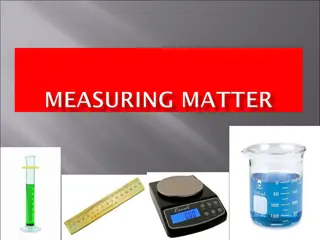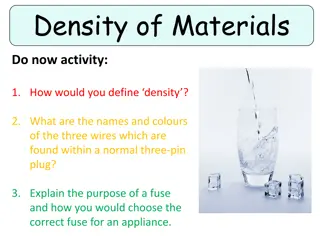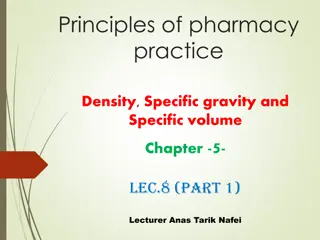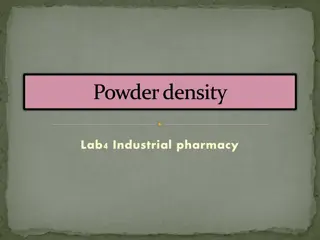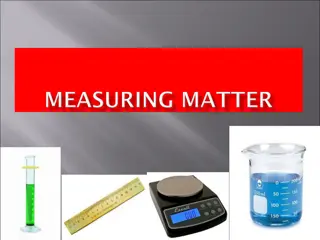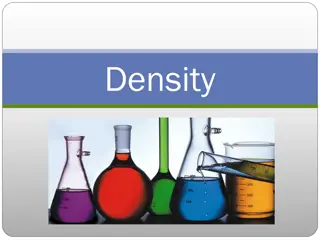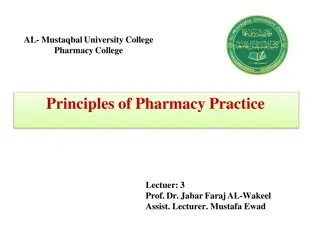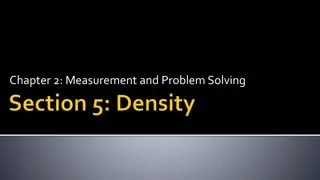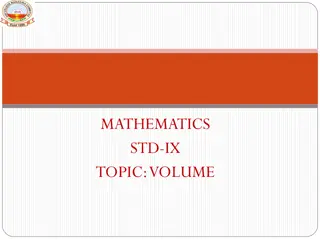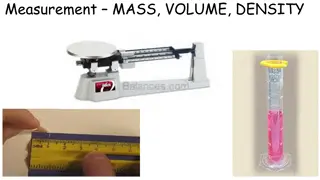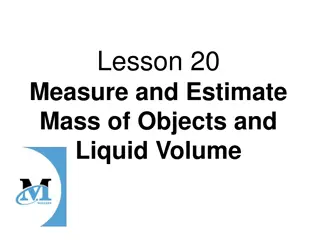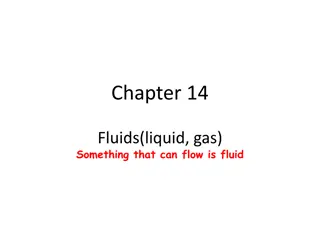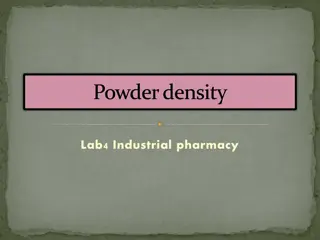Understanding Mass, Volume, and Density in Science
Discover the essential concepts of mass, volume, and density in science. Learn how to differentiate between these terms, their units of measurement, and their significance in understanding the physical properties of objects. Explore the importance of mass in determining the amount of matter, the concept of volume in relation to space occupied, and the calculation of density as mass per unit volume. Enhance your scientific knowledge with visual aids and clear definitions for easy comprehension.
Download Presentation

Please find below an Image/Link to download the presentation.
The content on the website is provided AS IS for your information and personal use only. It may not be sold, licensed, or shared on other websites without obtaining consent from the author. Download presentation by click this link. If you encounter any issues during the download, it is possible that the publisher has removed the file from their server.
E N D
Presentation Transcript
Mass/Volume/Density FOR YOUR VOCABULARY PLEASE DO THE FOLLOWING IN YOUR ISN: 1. NUMBER EACH VOCABULARY WORD. 2. HIGHLIGHT THE VOCABULARY WORD. 3. WRITE THE COMPLETE DEFINITION AS PRESENTED. 4. DRAW A QUICK SKETCH THAT WILL HELP YOU REMEMBER EACH WORD. 5. REMEMBER TO ADD IT TO YOUR TABLE OF CONTENTS.
1. Mass The amount of matter that makes up an object.
2. Volume The amount of space that an object occupies.
3. Density Density is defined as mass per unit volume. It is a measure of how tightly packed and how heavy the molecules are in an object. Density is the amount of matter within a certain volume. The average density of an object equals its total mass divided by its total volume.
4. Gram (g) The basic unit of measurement for mass. 1 cubic centimeter of water has a mass of 1 gram.
5. Meter (m) The basic unit of measurement for distance. 1 meter = 39.4 inches
6. Liter (L) The basic unit of measurement for volume. 1 liter = 4 1/4 cups = 33.8 ounces
7. g/cm3 Gram per cubic centimeter is a unit of density. Defined as mass in grams divided by volume in cubic centimeters.
8. g/mL Measurement unit of density; used to measure volume in milliliters in order to estimate the mass in grams.
9. mL Stands for milliliter; used to measure volume. 1 mL = 1/1000 L
10. cm3 Cubic centimeter; a commonly used unit of volume. Corresponds to the volume of a cube that measures 1 cm x 1 cm x 1 cm.
11. Graduated Cylinder A piece of equipment used to measure the volume of a liquid.
12. Triple Beam Balance An instrument used to measure the mass of an object very precisely in grams (g).
13. Beaker A simple container for stirring, mixing, and heating liquids in the lab. Beakers will range in size from 1 mL to several liters. Can be used to measure volume.
14. Viscosity A liquid s resistance to flow.
15. Velocity Speed and direction of a moving object.




